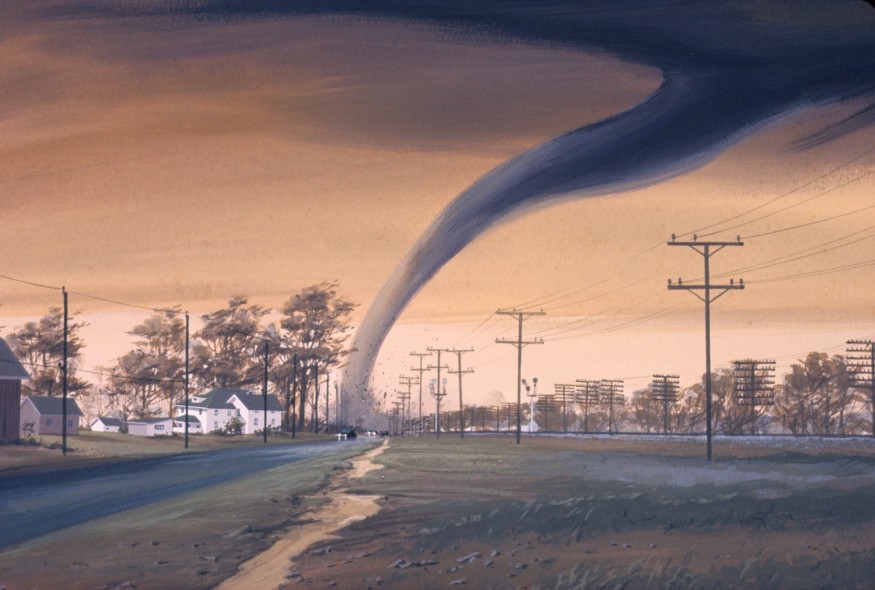
The probability of multiple tornadoes hitting Texas and several neighboring states is rising as a result of the persistent severe weather.
An early winter blast and record autumn warmth are causing a clash of the seasons, resulting in the strongest severe storm system to hit the South in nearly five months and the largest tornado threat to hit the US.
In its Friday severe weather outlook, the Storm Prediction Center stated that multiple tornadoes are entirely possible over areas in eastern Texas and far southeast Oklahoma. In addition, one or two strong tornadoes may develop from late afternoon to early evening.
Southeastern Oklahoma, eastern Texas, southwestern Arkansas, and northwestern Louisiana are at an elevated risk (Level 3 of 5) of severe thunderstorms on Friday, according to the Storm Prediction Center. Texas includes Dallas, Fort Worth, Austin, and Arlington as part of this threat zone.
Strong Tornadoes Ahead
According to the prediction center, East of the I-35 corridor, from far southeast Oklahoma and southward into eastern Texas, will be the most likely region for powerful tornadoes, such as those with an EF2 or higher.
As thunderstorms align and move into Arkansas and Louisiana on Friday afternoon and evening, the main threat will change from tornadoes to damaging winds overnight.
As this storm system moves swiftly from east to west the likelihood of flash flooding in the Ark-La-Tex region will be reduced. Up north, between one and four inches of rain are predicted to fall between Kansas and Wisconsin through Saturday.
Rainfall is desperately needed in this area because the Mississippi River has reached record low levels due to the recent drought, which has an impact on shipping industry and the supply chain.
From Kansas and Missouri south to Texas and Louisiana, a total of 37 million people are at risk of the incoming severe storms on Friday. The risk areas also include Houston, Oklahoma City, San Antonio, Little Rock, Kansas City, and Wichita.
The most recent time an enhanced risk or even higher was in effect for the greater Dallas-Fort Worth region was on May 24 this year.
Second "severe weather season" in November
While tornadoes can occur in the US at any time of the year, spring is when they occur most frequently because of the clash of hot and cold air brought on by changes in seasons. Relatively similar merging of temperatures also takes place in the fall, which is why a secondary "severe season" in the later part of the year is frequently observed.
While the spring months are climatologically the busiest, according to the National Weather Service New Orleans office, there is a secondary uptick in tornado activity in November.
Texas experiences an average of seven tornadoes in November, followed by Alabama with six, Louisiana with five, and Mississippi with five.
The fatality rate of a tornado is significantly influenced by the time of day it occurs. Because so many individuals are sleeping and not aware that they should be looking for a safe place to hide, nocturnal tornadoes are far more dangerous. There is still a chance for several rotating storms into the evening hours, even though the daytime hours pose the greatest tornado threat with this particular event.
Residents are advised by experts to ensure that their severe weather safety plan is ready to go before inclement weather occurs. Aside from knowing where to go in case of severe weather, residents should also check that their mobile phones are fully charged and their flashlights are operational in case they lose power.
NWS New Orleans said that having a dependable way of getting severe weather warnings is one of the most crucial aspects of a severe weather safety plan, CNN, with meteorologist Haley Brink, reports.
Tornadoes
According to Ready, tornadoes are violently or ferociously rotating columns of air that originate in a thunderstorm and travel to the ground. The Centers for Disease Control and Prevention (CDC) warns that people are subject to risks from extremely strong winds and run the risk of being hit by flying and falling objects during a tornado. The damage left behind by a tornado increases the risk of injury.
Related article : South US Tornado Threat Increases Due to Severe Storm and Western US Covered by Heavy Snow
© 2025 NatureWorldNews.com All rights reserved. Do not reproduce without permission.





